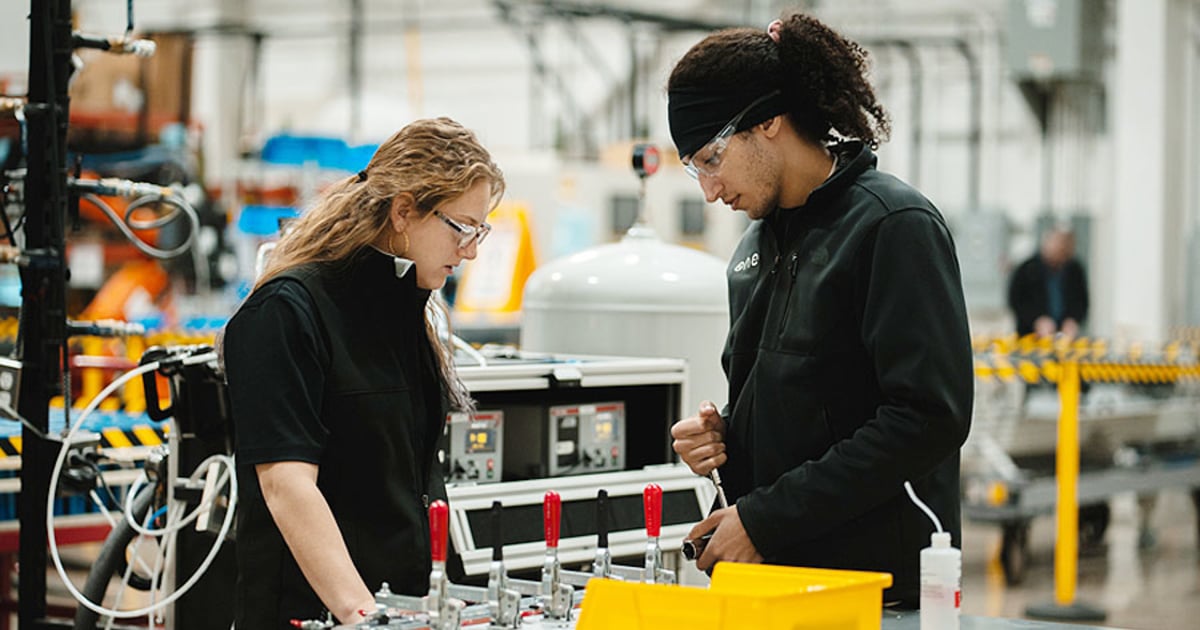
ANAHEIM, Calif. — U.S. car buyers love the edge cases.
They buy seven-seat SUVs for a family of four. They get pickups in case they want to tow something. They purchase tricked-out Jeep Wranglers and Ford Broncos but never leave the pavement.
Mujeeb Ijaz, CEO of Our Next Energy EV battery company in Novi, Mich., has considered the EV edge case conundrum. Buyers want huge ranges but rarely drive those distances between battery charging sessions.
The riddle Ijaz wants to solve is how to provide giant range without massively increasing the expense and weight of an electric vehicle. He thinks the solution is two separate batteries — one that is small and reliable for everyday driving and a second with an energy-dense chemistry to power the car on extra-long trips.
“Our ambition is to have a 600-mile on a single charge range so that we can offer customers the capability to adopt electric vehicles for any use case that comes their way — temperature, speed, towing, hill climbing, etc.,” Ijaz told Automotive News, while attending the ACT Expo clean transportation conference last week.
The approach is unique, said Conrad Layson, senior alternative propulsion analyst at AutoForecast Solutions. “No one else currently on the market is carrying two different batteries with different chemistries at the same time,” he said.
But the concept of dual chemistries is viable, Layson said.
Some automakers are experimenting with using different chemistries in the same battery package.
“It’s not here yet, but it is certainly under development,” he said.
For now, Our Next Energy, also known as ONE, has the funding to pursue the dual-battery strategy even as it starts to sell conventional batteries to electric commercial vehicle manufacturers, including Shyft Group and Motiv. This year, ONE raised $300 million in its series B funding round. The investments valued the company at $1.2 billion.
Automakers typically rely on what’s known as NMC battery chemistry, which uses lithium, nickel, manganese and cobalt to get the highest ranges. It is an energy-dense cocktail that, while still heavy, beats other combinations on range and weight. But there are problems, Ijaz said.
Nickel and cobalt are expensive. Battery makers need very high-grade nickel — better than what goes into its typical use manufacturing shiny coatings and stainless steel. Nickel’s mining and refining come with environmental concerns, according to a McKinsey & Co. report.
There are also geopolitical issues. Almost a third of nickel’s global production comes from Russia and China, according to the consulting firm. Those two nations account for more than 40 percent of the refined output.
Cobalt has similar problems. About 70 percent of the world’s production comes from the Democratic Republic of the Congo, “which operates without safety standards or worker protections” and allows child labor, according to a report from Institutional Shareholder Services.
And then there is a chemistry issue — fires.
“Nickel and cobalt, when paired together, are an oxide chemistry and represent a risk of thermal runaway,” Ijaz said.
Chevrolet, Hyundai and others have recalled EVs using NMC chemistry batteries because of fire risk.
Ijaz said the dual battery project, called Gemini after the astrological twins, leverages different battery chemistries to lower cost, increase safety and reliability and provide the edge-case range consumers seek.
Our Next Energy is working with BMW to begin testing an electric iX SUV equipped with the dual battery system this year.
The first component of the system is an LFP, or lithium iron phosphate battery. Although it doesn’t pack as much energy as NMC chemistry, it has fewer of the costly materials, a longer lifespan and is less prone to fires.
Automakers including Tesla, General Motors and Ford are gravitating to LFP chemistry for some models to reduce cost.
The Our Next Energy LFP battery will be small by current industry standards, providing about 150 miles of range.
The range-extending battery would add 450 miles before the car runs out of juice. Ijaz wouldn’t detail the chemistry of the second segment — the long-range battery.
“We can make that second chemistry very much a boutique chemistry designed only for range extension,” he said.
However, Ijaz provided a few other details. He expects it to be less costly than other chemistries at about $50 per kWh of storage. That compares with roughly $75 for LFP and $115 for NMC, he said.
It is a cobalt and anode-free battery that uses manganese-rich cathodes. An anode is an electrode that allows current to enter a conventional battery. A cathode is the pathway for current to leave the battery.
It will take the BMW project and other testing to demonstrate whether the second battery will fulfill its mission of providing extra range when required.
It also won’t be as durable. The typical LFP battery in a new EV should last for about 3,000 charges before starting to degrade, according to Our Next Energy. That represents more than 400,000 miles of driving and should outlast the car’s useful life. But the range-extending battery is expected to go for 200 cycles before starting to degrade, or about 90,000 miles.
Ijaz said the edge cases, where a driver needs the extra range, come only about four times annually. But even chemistry more sensitive to range reduction after hundreds of charges still will serve its purpose, Ijaz said. For example, if it lost 20 percent of its charge capability, the battery would still provide more than 350 miles of range, giving a vehicle with the Gemini system the ability to go 500 miles between charges.
“We think that’s the future of where electric vehicles will go,” Ijaz said. “What the market really is looking for is durability, safety, cost in everyday driving, and then a special chemistry for that range extension.”